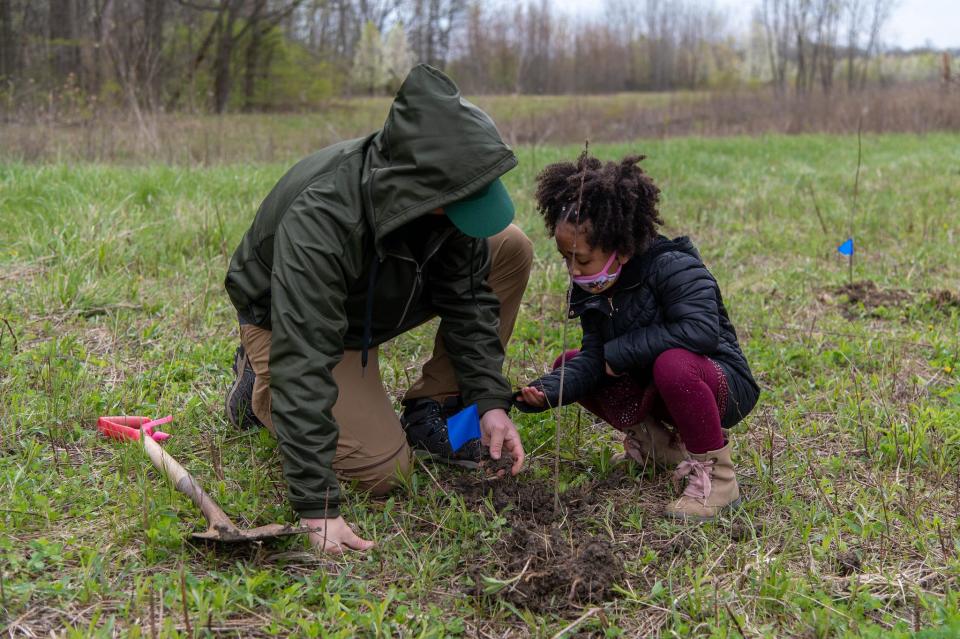Monday's Earth Day serves as a reminder to protect the planet
As Mother Nature stepped into spring, she brought us refreshing showers and delicate wildflowers. We’ve been pelted with hail, and our roads have flooded, but we’ve also seen cloudless afternoons — perfect for viewing remarkable celestial events!
With the later days of April comes a time to celebrate all that nature entails; the one and only Earth Day — Monday, April 22 — in honor of our one and only Earth. This year, I found myself curious about the origins of Earth Day and the people who worked to bring the environment to the forefront of our societal consciousness at least once a year.

For those of you who, like me, were unfamiliar with how long we’ve been celebrating Earth Day, I can proudly report that Monday marked the 54th anniversary of the holiday!
A little over half a century of taking a day to celebrate, and care for, the world around us. But how did we get here and what kind of impact does Earth Day genuinely have?
Looking back on the journey that led to the first Earth Day protest, there are several individuals who were incredibly influential and many more people whose support molded the outcome.
The first person to recognize is Rachel Carson. Carson was a writer and marine biologist who, in 1962, published a very influential novel entitled “Silent Spring.”
In this book, she questioned the ethics of human industry’s disregard for wildlife and the destruction of nature in the name of what some consider progress. Furthermore, Carson illustrated the interconnectivity of life while calling attention to the dangers of overusing chemicals like DDT.
“Silent Spring” was a sensation. It raised environmental awareness and mobilized a grassroots movement that would prove invaluable to the Earth Day effort in less than a decade.
Jumping forward a little to 1969, the next two folks you’ll need to know about are Sen. Gaylord Nelson from Wisconsin and a student activist named Denis Hayes.
The '60s were a difficult time for the environment, and after witnessing the Santa Barbara Oil Spill in 1969 (the third largest in U.S. history) Nelson wanted to apply student activism to the fight against pollution.
Hayes was a skilled organizer. In just a few months, he’d established a network of 85 coordinators. This team worked with students, teachers and environmental advocates to turn Earth Day into a national event with demonstrations, education and volunteer work.
The final name to mention here is Walter Reuther, the leader of United Auto Workers who contributed funds and manpower to ensure the Earth Day organizers had what they needed for success.
Indeed, they were successful.
The very first Earth Day united 20 million Americans under a single cause. It ushered in a decade of environmental activism that saw the development of the Environmental Protection Agency and a multitude of environmental legislation that we still depend on today, like the Clean Air Act. Since 1970, Earth Day has gone global and connected thousands of environmental groups across many nations to coordinate their efforts and develop projects that help preserve our planet year-round.
While these numbers are certainly impressive, they’re also evidence that caring deeply is one of humankind’s greatest strengths.
Everyone who moved the needle on Earth Day understood the common history.
Change, however small or sweeping, is not possible without painstaking effort, and it is not sustainable without a network of like-minded individuals willing to share in the labor, so they may better appreciate the fruits that grow from it.
To me, the greatest lesson behind Earth Day’s history is this power of collective action — the power of dedication, the power of caring.
To get the full story on Earth Day’s history, learn about the Earth Day organization’s projects, and more, visit earthday.org. Then visit www.fortheland.org/volunteer to become a volunteer with Red-tail Land Conservancy.
Emily Grant is Red-tail’s Stewardship Coordinator, Land Protection. She is eager to preserve the native habitats that inspired her love of wildlife, so they may be a source of beauty and safety for those who need them.
This article originally appeared on Lafayette Journal & Courier: Monday's Earth Day reminds us of the power of collective action

